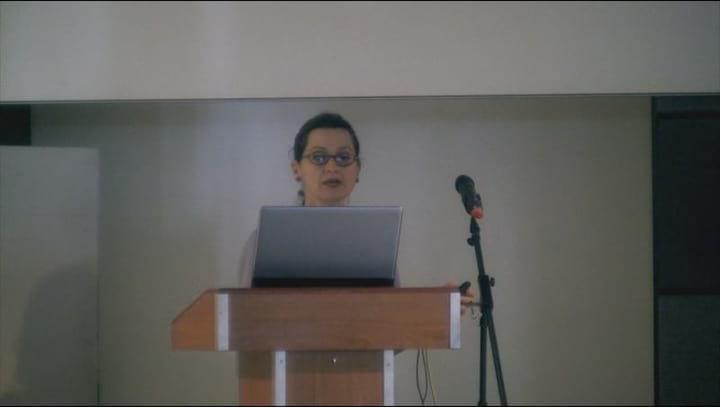Presence of deoxynivalenol, zearalenone, ochratoxin A, T-2 and HT-2 and fumonisins in products intended for animal feeding
Interesting about mycotoxins in products for animal feeding. According to the Official Journal of the European Union (Spanish Edition, ISSN 1725-2512, L229, August 23, 2006), The Guidance Values published, are considered for the time being as “Acts whose publication is not a condition for its applicability”.
Alberto Gimeno
Technical Consultant in Animal Nutrition and Mycotoxicology

Good article about mycotoxins in products for animal feeding. I think that chemicals and toxins should be removed from the animals feed as well as the animals. This would be great for the human health. It could prevent alot of diseases in animals as well as in HUMANS also.
It could cause muscle diseases and more to be wrong with Humans. If I could the world would be organic. And even more healthy than its been in a long time. Probably for hundreds of years. No animal should be recycled and feed to other animals. By doing so, I believe it has made BSE worse and did of course created it along with other dirty habits to save money. None, of us are making money on this only the ones in office who agree to such things. Who is getting sick? Regular people. It's something to think about. We dont need all of these chemicals and toxins . But, We do need to put better things in our animals. So that we can live better and therefore be healthier. And live life to it fullest .
Dear Chrissy Moon,
I agree with you and I think that some of the guidance values should be revised and reduced since I consider that they are high and with risk for the animals. However the collaboration of all EU country members is necessary to provide results (see de Hereby Recommends in the published article) to the commission to allow the future publication of the final maximum allowed concentrations of those mycotoxins. Thus the guidance values published are considered, for the time being, as “Acts whose publication is not a condition for its applicability”. It is my opinion.
Alberto Gimeno
Technical Consultant in Animal Nutrition and Mycotoxicology

Dear Dr.,
We hope that the animals feeds free from any pathogens as well as any toxins which consequentelly return on public health.
I think this is the main goal in the veterinary researchs.
My best regard.
Dr. Abdel Monem A. Samee
Aflatoxicosis is currently a major limitatiom to poultry health and productivity in Nigeria. Lack of adequate laboratory services is the big challange facing the management or this poultry problem.
Recently private laboratory in Nigeria are spinging up to assist farmers in the management of this disease.
The most prevalent and mostly diagnosed mycotoxin in Nigeria is aflatoxin B1.
I believe that the minimization of mycotoxin contamination to poultry feed must take the lead in strategic formulation on feed milling policy in Africa.
Dr Stephen Adejoro
Poultry management consultant
Nigeria
No doubts that aflatoxicosis consider a limiting factor to animal production industry worldwide. I think stating the problem and indicating the limits should be accompanied with a clear method for determination of that limits. On the other hand we should recommend natural anti-aflatoxicosis feed additives (prebiotics, probiotics, phytobiotics, etc) to minimize the effect of mycotoxin and aflatoxicosis to stress on birds and human health and welfare.

Your network about mycotoxins in products for animal feeding is a very useful one.
Thanking you.
Dear Dr.
Feed and fodder origin mycotoxins are not only going to food chain, they are also affecting male and female reproduction in terms of spermatogenesis and folliculogenesis, thereby reducing the reproductive success in farm animals.
Thank you.
Mycotoxin zearalenone (zen) impairs fertility in farm animals. Pig is the most sensitive species to zearalenone toxicosis, especially prepubertal gilts. Our lab investigated the effect of zearalenone and its major metabolite (á - zearalenol) on boar sperm characteristics and binding capacity, under in vitro conditions. Zen and a-zen have a direct toxic effect on boar sperm and their effect is time- and dose-dependent. These results possibly indicate that ingestion of zen and a-zen could affect spermatozoa in the epididymis and cause lower motility of ejaculated spermatozoa. As zen and a-zen mycotoxicosis is a very common problem in the pig industry, further investigations relative to pathway of zen action, in vivo administration of zen on boar, in vitro fertilization under zen and a-zen influence and induction of acrosome reaction are needed.
Dr Ioannis Tsakmakidis
DVM PhD
Dr Adejoro pointed out a major issue on mycotoxins that affects Nigeria. There is need for further studies in this area in Nigeria. Many losses suffered by livestock farmers in Nigeria could largely be traced to this. We hope also that technical support shall be provided to help Nigeria arrive at results that will give a good knowledge on the Nigerian mycotoxin status.
Thanks Mr Omede, for your observation about Nigerian's technical deficiency as regards aflatoxin mitigation in poultry production.. An NGO (Livestock Industry Foundation for Africa, LIFA) has been created by Dr Stephen Adejoro & co, which would see among others , to the mitigation of natural and man made risks militating against the poultry and livestock industry in Africa ( especially climate change aflatoxin induced mitigation) . More technical supports are encouraged to input into the NGO to fund aflatoxin mitigation research in Africa including Nigeria. Thanks









.jpg&w=3840&q=75)





